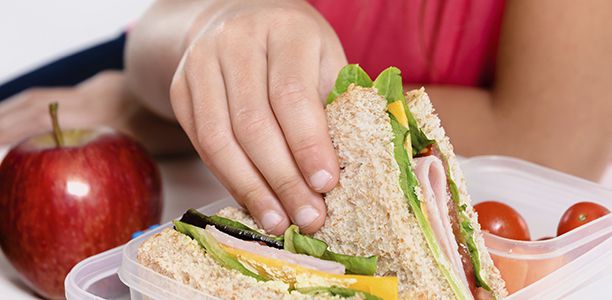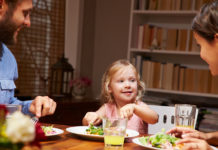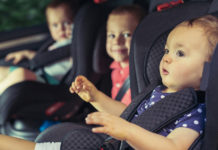With the 2015 school year starting, for most Queensland children school lunches are once again on the agenda and a QUT expert has some timely advice for parents on how to make them both healthy and enticing.
Dr Helen Vidgen, Senior Research Fellow from QUT’s School of Exercise and Nutrition Sciences which runs the Queensland Government funded PEACH program promoting healthy weight in children, said it is easy to be misled by items promoted as healthy lunch box snacks such as muesli bars, cheese dip and biscuit snack packs, juices, flavoured yoghurts and fruit straps.
“Lunch boxes should be full of core foods such as vegetables, fruits, grains, reduced fat dairy and lean protein foods. The latest National Nutrition Survey shows that instead, more than a third of Australian children eat food not in these groups, in other words, junk food,” Dr Vidgen said.
“Very few snack foods marketed to children as lunch box fillers are core foods. This means they don’t help children to grow and develop well.”
“The Australian and New Zealand governments’ Food Standards Code defines what can go on a label. There are few rules about product and brand names so instead look at the nutrition information panel and ingredient list to guide your purchasing.”
“Try to get your children involved in this as early as possible. Being a critical thinker about where your food is coming from is a great skill to develop. In the PEACH program we give families a guide to take with them when shopping.”
“Children can be fussy but parents can be creative to get around that. If a child doesn’t like one food in a particular group swap it for another. For example, melon balls in place of a whole apple.”
“Vary the types of bread to make things interesting such as wraps, rolls, pita bread or use rice and pasta.”
“Try slicing bread into different shapes or make ribbon sandwiches by placing alternate fillings on each layer.”
Dr Vidgen suggested parents and caregivers also consider using foods that transport well and layer sandwiches so wet foods like tomatoes are not near the bread but rather placed between lettuce or cheese.
“Take particular care with meats and dairy foods. These foods are best kept refrigerated. If that isn’t possible, pack lunches in an insulated bag with an ice brick to keep food fresh and safe,” she said.
“As the term progresses, it will also be helpful to have your pantry ‘back-to-school’ ready.”
“Whenever possible, do some weekend baking to stock up your supplies. Items such as savoury and fruit-based muffins, pikelets and zucchini slice freeze well. Involve older children in preparing their own lunches. It’s a great simple place to start developing food preparation skills.”
“Finally, always give water as a drink.”
For healthy lunchbox recipes visit www.healthier.qld.gov.au which features kid-friendly ideas like ham and veggie slice, Mexican sandwiches and much more.
(Source: Queensland University of Technology)










